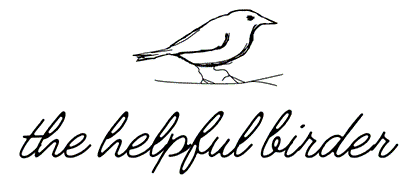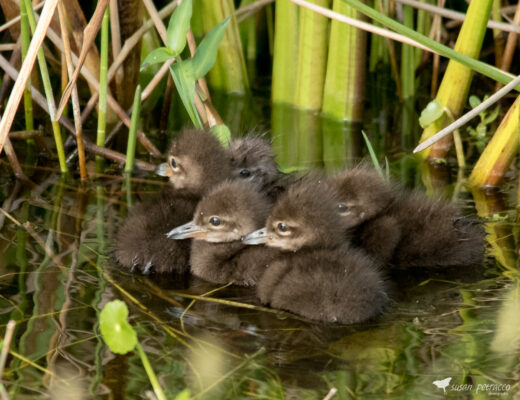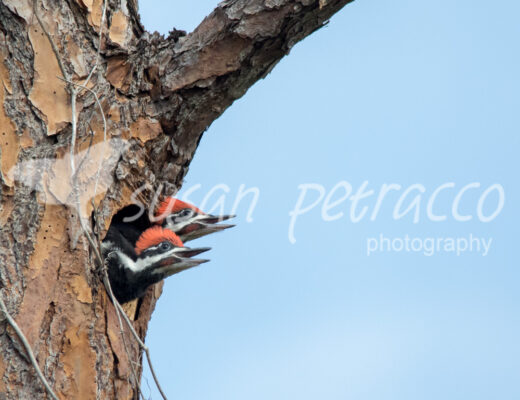Birds are everywhere, right?
That’s totally true, except when you’re armed with your field guide, a pair of binoculars, a packed lunch, and a camera. Then they’re nowhere to be found.
Birds really like Murphy’s Law. Or maybe it’s similar to the old saying, a watched pot never boils? But nothing is more frustrating than wanting to find birds and having absolutely no luck.
Fortunately, help is on the way! There are tons of places to look for birds, so let’s start with some areas to consider.
Your Yard
I can almost guarantee there are birds in your yard…if you have one! Even if you live in an apartment complex, there are still likely birds in the parking lot, the landscaping, or simply out your window. (Here’s my own yard list if you’re interested!)
Now, they may not be the species of birds you were hoping to see, and you may have to look for them. The best two places are up (up, up!) in the branches of trees, and on the ground, especially in protected areas, like under cars or bushes. These two locations will usually have different types of birds, depending on the birds’ feeding preferences and other habits.
The Local Park
Birds are often attracted to green spaces, and parks are an easy place to look This is true whether your closest park is nothing more than a swing set, or if you live near Central Park in New York City!
So head to the nearest park and look in the same kinds of areas: up in trees and down at the ground. If your park has a pond or lake, check there too, particularly along the shoreline and within vegetation that grows near the water. Also watch the actual water itself; birds like cormorants and anhingas dive for fish to eat, and can be completely submerged while they hunt.
Cemeteries
Cemeteries are amazing places for birds! They are generally quiet and many have trees and bushes that birds like to use for cover and protection. One of my favorites is Evergreen Cemetery in Fort Lauderdale, Florida, which even has a small creek beside the property.
When you visit, keep in mind that birding isn’t the primary activity here. People are burying loved ones or visiting their graves, so make sure you remain quiet and respectful. Try not to walk on grave markers, either. This good behavior also keeps you from scaring away the very birds you’re looking for, so it’s a win-win situation.
Schools and Churches
Schools often have play yards and other green spaces, making them a good spot, too. Just make sure to read or learn any rules and don’t trespass, regardless of whether you’re there when school is in session, or not.
The same is true of churches and other religious grounds., particularly if they have some green spaces around them, which many do.
Fast Food Joints and Restaurants with Patios
Some birds love to forage for the food we leave behind! In fact, there are several species that people commonly call “drive-thru birds”, because they like to hang around fast food restaurants. Herring gulls, great-tailed grackles, and house sparrows are commonly seen nearby.
Sit-down restaurants with patios are another good option. Birds love to watch for a fallen French fry, or they may head straight for an unsecured garbage can. My local Panera Bread has tons of birds! In most cases, these may not be birds you’re particularly interested in, but it’s a good consistent place if you just want to work on photography skills or practice your identification.
Farms / Agricultural Fields
Agricultural fields around farming areas are also great places for birds. In Florida, you might see meadowlarks sitting on fenceposts, or swallow-tailed kites swooping over fields with ripe watermelons, scooping up the insects that feed on the rotting fruit.
Think about it: What do farmers often put in fields? Scarecrows! And what are scarecrows supposed to do? Yep! Scare away crows!
Local Ponds and Lakes
Ponds and lakes support many kinds of birds, from shorebirds like herons, to diving birds like cormorants. And birds don’t just like large lakes, even small ponds attract them. I live on a retention pond (in Florida, that’s the term for usually-manmade ponds found beside roads, shopping centers, and in suburban neighborhoods). My pond isn’t very big at all, but I’ve seen more than 15 species there, including popular ones like white pelicans and roseate spoonbills.
The Beach
If you live close enough to the ocean, then a beach is a great place to find birds. Shorebirds are often plentiful on the sand, and gulls, pelicans, and perhaps osprey fly overhead. Also use your binoculars to look way out over the ocean and you may spot some pelagic species. (“Pelagic” refers to birds that spend most of their time out to sea.)
The “beach” can also refer to the sandy shores of lakes, too, and they also attract shorebirds.
Power Lines
You can often see birds perched on power lines and utility poles. Even raptors are down to them; here in central Florida it’s common to see red-shouldered hawks on power lines, and osprey perched on poles. Just be careful and don’t “bird while driving”…it can be dangerous!
Thanks to my friend Heather E. for this tip!
Nature Preserves
Thankfully there are lots of nature preserves, where mankind has set aside land not to be developed. These may include state and national parks, but there are plenty of others as well. Head over to Google and do a search for “nature preserve near me” and you’re very likely to get a list.
A nature preserve may be large or small, but it often exceeds community parks and has less recreation that might disturb the birds and other residents. You won’t generally find playgrounds and tennis courts there!
Nature preserves often have very specific rules, so do as much research as you can before you go. Many do not allow animals other than registered service animals. Parking may be limited. And there may be other rules you need to follow as well. So check out the place you want to go online first, as best you can. And make sure to take water with you if you’ll be going any distance from your vehicle.
Wildlife Management Areas
WMAs are similar to nature preserves, but they “manage” the wildlife by allowing hunting and other recreational activities that nature preserves often do not. Again, find out the rules for the area you want to visit. Make sure to take any seasonal advice or rules to heart, as well. For example, you may need to wear bright clothing or stay clear of certain areas during hunting seasons.
However, like nature preserves. wildlife management areas have usually large areas of undeveloped land, perfect for attracting birds.
I’m not sure whether all states have WMAs or not, but many do.
The Great Florida Birding and Wildlife Trail
This only applies to Florida, but lots of birders live here, or travel to destinations within our sunny state to look for birds. One of our best natural resources is the Great Florida Birding and Wildlife Trail.
The name is a slight misnomer as this isn’t a trail you can hike from one end to another. Instead, it’s a series of more than 530 sites that are known for offering great views of birds and other wildlife. Here in Brevard County, there are 38 sites alone.
If you go to their website, you can click Trip Planner in the menu to really map out your visits and make the most of your time birding in Florida.
If you’re so inclined, you might also want to participate in their Wings Over Florida program, where you can earn beautiful paper certificates based on how many species you have seen. They have a program for butterflies too, so make sure to look for smaller flying creatures while you’re out birding!
Thanks to my friend Bert A. for suggesting this section.
Use eBird
eBird is a website and smart phone app created by Cornell University. Birders use it to record sightings and keep lists, especially their life lists. If you go to their homepage, near the bottom, there’s a form labelled “Explore Regions”. Use that to search for areas near you, to the county level.
For example, if I search for Brevard County, Florida, I’m taken to this page. There I can see a table of recent bird sightings. The location column lists where each was seen. Some of them are clickable “hot spots”, which are known locations for birding – as opposed to someone’s house, or the side of the road where someone pulled over to write an incidental sighting. Click the hot spot name to learn more about the area.
The great part about eBird is you can see what species was seen there. The table lists all recent species, with its most recently-recorded location. You can skip over the ones that don’t interest you and keep scrolling until you see something that does.
Those are my thoughts on where to look for birds when you don’t know where to find them. Please feel free to chime in with your own suggestions in the comments below. I’m sure there are TONS more ideas than what I came up with here.



